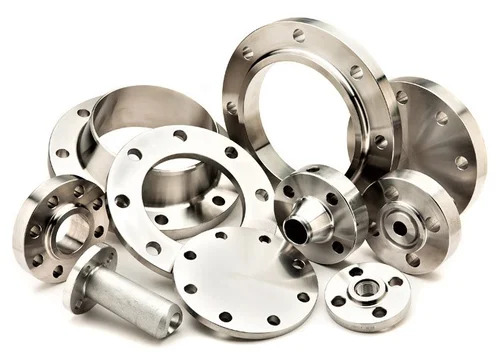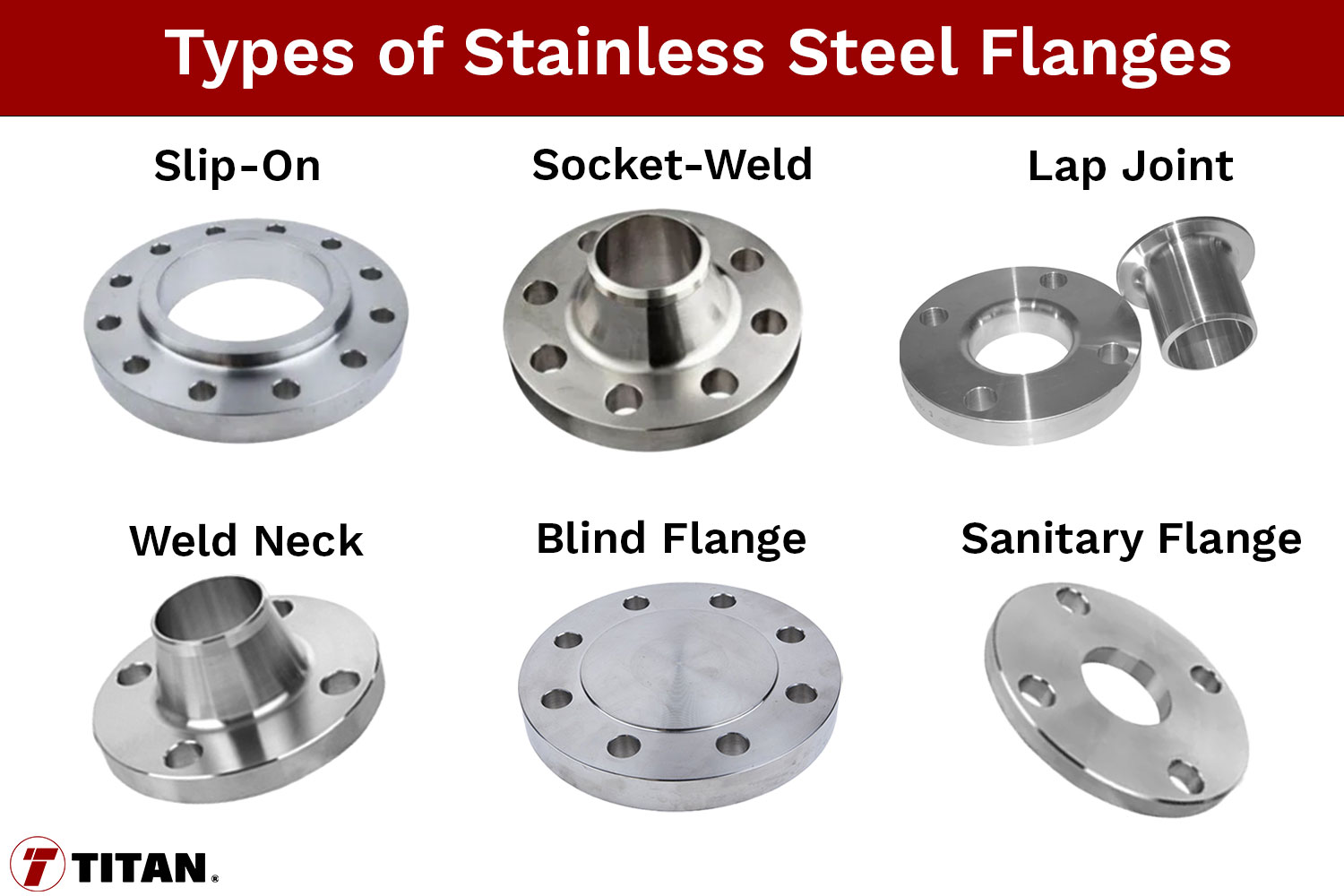Flanges are essential components in piping systems, serving as connectors between pipes, valves, and other equipment. They create a secure, leak-proof connection, which is vital for maintaining the integrity of fluid or gas transport. A flange connection typically involves two flanged ends that are bolted or welded together. This method not only ensures a tight seal but also allows for easy disassembly when needed. In some cases, such as with sanitary flanges, a gasket is used to enhance the sealing performance. Flanges are available in a wide range of materials, including carbon steel, stainless steel, and others, making them suitable for various environments and applications. This article explores the importance, types, sizes, and uses of flanges in modern piping systems. Flanges play a crucial role in piping networks by enabling seamless connections between pipe sections. They provide a surface for sealing, preventing leaks and ensuring safe operation under pressure. Additionally, they help distribute the load across the system, enhancing structural stability. By integrating valves or flow control devices, flanges also contribute to the efficient management of fluid movement. These components are widely used in industries such as manufacturing, petrochemicals, and plumbing, where reliable and durable connections are essential. Whether for installation or maintenance, flanges ensure a secure and efficient way to handle fluid transport. In industrial and commercial piping systems, flanges are indispensable for creating strong, leak-free joints. They are especially important in high-pressure environments where even minor leaks can lead to serious issues. Flanges allow for smooth and secure connections, making them ideal for both temporary and permanent installations. Their use enhances the efficiency and safety of fluid transport, supporting operations in a wide range of sectors. Understanding the different face types and materials is key to selecting the right flange for each application. For example, stainless steel flanges are known for their durability and resistance to corrosion, making them a popular choice in harsh environments like chemical plants and food processing facilities. Adherence to standards such as ASME and ASTM ensures that these components meet quality and performance requirements, providing long-lasting reliability. There are numerous types of flanges, each designed for specific applications and conditions. Standards from organizations like the American Society of Mechanical Engineers (ASME) and the American Society for Testing and Materials (ASTM) ensure consistency and compatibility in piping systems. For hydraulic applications, flanges may follow the SAE J518 or ISO 6162 standards. Understanding the differences between these types helps in selecting the most appropriate option for any given project. Slip-on flanges are one of the most commonly used types due to their ease of installation and cost-effectiveness. They are slipped over the end of a pipe before being welded in place. This design makes them ideal for applications where quick assembly and lower material costs are priorities. However, slip-on flanges are not recommended for high-pressure or high-temperature environments, as they may not offer the same level of strength as other flange types. They are best suited for moderate conditions where flexibility and affordability are important factors. Socket-weld flanges are typically used in smaller diameter, high-pressure piping systems. The pipe is inserted into a recessed area of the flange, called the socket, and then welded in place. This design minimizes turbulence and reduces the risk of leakage, making it ideal for critical applications such as those found in chemical and petrochemical industries. Their compact size and strong connection make them a preferred choice in environments where space is limited and performance is crucial. Lap joint flanges are particularly useful in systems that require frequent disassembly and maintenance. They consist of two parts: a stub end that is welded to the pipe, and a flange that slides over it. This design allows for easy alignment and rotation, simplifying the installation process. Lap joint flanges are cost-effective since only the stub end needs to match the pipe's material or lining, while the flange itself can be made from a less expensive material. They are commonly used in applications involving lined or expensive pipes, where regular access is necessary. Weld neck flanges are designed for high-pressure and high-temperature environments, making them a popular choice in industrial settings such as chemical processing and power generation. They provide a strong, leak-proof connection between pipes and other components, reducing stress and increasing the system’s longevity. Available in various forms, including standard long, extra long, and integral types, weld neck flanges are versatile and suitable for a wide range of applications. Their robust construction makes them ideal for heavy-duty systems where reliability is paramount. Blind flanges are solid discs used to close off the end of a pipe, preventing the flow of fluids or gases. They are commonly used in water systems, chemical plants, and construction projects for pipeline extensions and pressure testing. These flanges are available in various materials, including A36 steel and stainless steel, to suit different operational needs. Installation involves securing the flange to a clean, smooth pipe end using bolts, ensuring a tight and durable seal. Sanitary flanges are specifically designed for industries where cleanliness and sterility are critical, such as pharmaceuticals, biotechnology, and food and beverage production. They feature smooth, non-porous surfaces that prevent contamination and make them easy to clean. These flanges are often used in systems that require frequent disassembly for maintenance or inspection. They adhere to strict industry standards, such as those set by the 3-A Sanitary Standards and ASME-BPE, ensuring product quality and compliance with hygiene regulations. Flanges are ring-shaped fittings used to connect pipes, valves, pumps, and other equipment in a piping system. They provide an easy way to access the system for cleaning, inspection, or modification. Selecting the right flange depends on several factors, including the size and type of pipes, the pressure and temperature of the system, the fluid being transported, and the environmental conditions. Stainless steel offers excellent corrosion resistance and is ideal for harsh environments, while carbon steel is more cost-effective and suitable for high-pressure applications. Consider factors like temperature tolerance, weldability, and industry standards when making your decision. Flanges are typically installed by aligning them on either end of the pipes, inserting a gasket between them, and securing the assembly with bolts. The exact installation method may vary depending on the type of flange and the specific application. Flanges are a fundamental part of modern infrastructure, playing a vital role in creating strong, leak-proof connections in piping systems across many industries. From slip-on and socket-weld to lap joint and blind flanges, each type is designed for specific applications and environments. Their versatility in materials and designs ensures that they can be adapted to almost any situation. This guide highlights the importance of understanding the unique features and proper use of each flange type, emphasizing their critical role in maintaining the safety, efficiency, and reliability of global piping networks. Shop all flanges Wrist Watch Packaging,Watch Packaging Design,Watch Packaging Box,Watch Box Packing Ningbo Hinix Hardware Industry & Trade Co., Ltd , https://www.hinixpack.comA Comprehensive Guide to Flange Basics
Usage of Flanges

Flanges' Significance in Plumbing & Piping
Examining Flange Varieties: An In-Depth Look

1) Slip-On Flanges
2) Socket-Weld Flanges
3) Lap Joint Flanges
4) Weld Neck Flanges
5) Blind Flanges
6) Sanitary Flanges
Frequently Asked Questions
What are flanges?
How do I choose the right stainless steel flange for my application?
How are flanges installed?
Conclusion